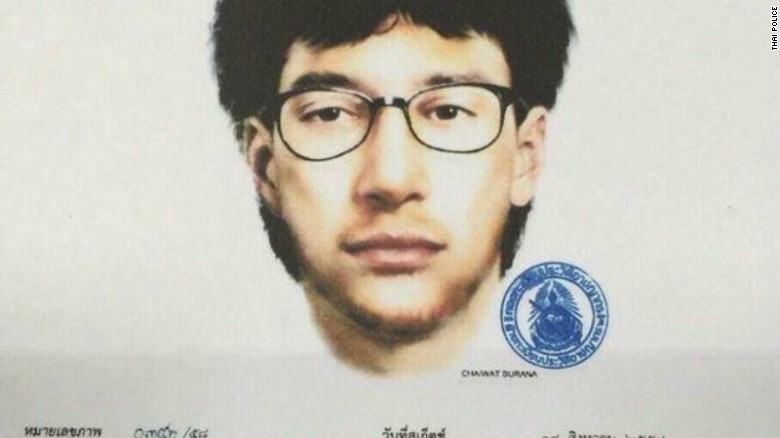Taxi driver: Suspect in Bangkok shrine bombing was calm, didn't seem Thai
The chief suspect in the deadly bombing of Bangkok's popular Erawan Shrine is "an unnamed male foreigner," according to an arrest warrant issued Wednesday by a Thai court.
A Thai motorbike taxi driver who believes he picked up the suspect shortly after the blast also said he did not seem to be Thai.
Driver Kasem Pooksuwan, 47, told CNN that the man -- who spoke an unfamiliar language on his cell phone during the short ride -- didn't speak to him at all but showed him a piece of paper with the name of a central city park written in English.
"When I dropped him, he still appeared very calm, just like (a) normal customer. He seemed not in a hurry at all," Kasem said.
Thai police spokesman Lt. Gen. Prawut Thavornsiri earlier said police had questioned the motorcycle taxi driver but did not give details of what the man had told them.
Police believe the man suspected of carrying out the deadly bombing in the heart of the Thai capital probably had accomplices.
Examination of surveillance video footage from the Erawan Shrine indicates at least two others were helping the main suspect in the attack that killed 20 people and wounded more than 120 Monday evening, police officials said at a news conference Wednesday.
Authorities are hunting for the man seen on a surveillance video putting a backpack under a bench in the shrine and then walking away shortly before the blast went off.
Beyond the yellow T-shirt and dark-framed glasses he was wearing, little is known so far about the man who police say they are "very sure" is the bomber.
Thai Prime Minister Prayuth Chan-ocha appealed on Wednesday for the chief suspect to turn himself in to authorities. Addressing reporters, Prayuth said he feared the suspect "might be silenced by killing" and that if he wanted to be safe, he should surrender.
Here's where things stand with the investigation into the attack, which authorities have described as a deliberate act of terror:
The chief suspect
Police say they don't yet know the suspect's identity but do now appear to have concluded that he's a foreigner.
They are studying more than 10 days' worth of closed-circuit TV footage from the scene.
The surveillance footage shows the suspect in the yellow shirt sitting down on a bench in the shrine at 6:52 p.m. Monday and hiding the backpack under the bench, said Prawut, the police spokesman. The man left without the backpack, and the blast went off minutes after he set it down.
Police have released a sketch of the suspect, who is described as a dark-haired man with glasses and light facial hair.
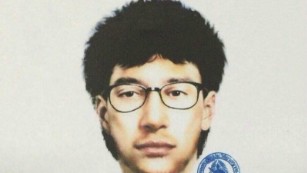
Thai police have released a sketch of the suspect in the shrine bombing.
Police also said the suspect had material wrapped around his forearms, which they say could indicate he had previously suffered some kind of injury.
A reward of 1 million Thai baht ($28,000) is being offered for information leading to the suspect's arrest, he said.
Kasem told CNN he thinks the suspect "is not Thai," although he admitted he did not look at his whole face. He said he remembers a long chin and white pale face very well, however.
"I wish I looked at his face more, but I really didn't know what happened yet at that time. Normally I would not stare at my customer's face," he said.
Kasem, who has been a Bangkok taxi driver for a little more than two years, said he did not think the unfamiliar language spoken by the man was English. He dropped his passenger at Lumpini Park, by which time he was no longer on the phone, he said. It wasn't clear whether he placed the call or received it.
The suspected accomplices
After studying surveillance footage from the shrine, police have zeroed in on two men they think could have been working with the man in the yellow shirt, said Prawut.
One was wearing a red shirt and the other a white shirt. The pair can be seen standing in front of the chief suspect as he places his backpack under a bench shortly before the explosion.
Police want to speak to both men as to whether they stood there to shield the yellow-shirted man's actions from view.
The device
The blast was caused by a pipe bomb containing wheel bearings, according to police.
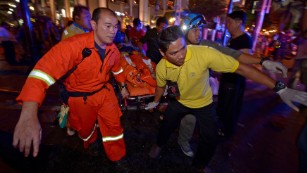
hotos: Explosion in Bangkok


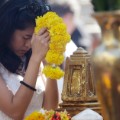
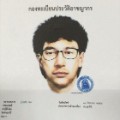
Investigators say they think the device was assembled in Thailand because many parts, including the pipe, were made in the country, Prawut said.
CNN security and intelligence analyst Bob Baer said it was unusual for a pipe bomb to kill so many people and cause so much damage.
"It would be a very sophisticated pipe bomb," he said.
Another blast that struck near a river pier in Bangkok on Tuesday was caused by a similar device, Prawut said. That explosion went off in the water and didn't hurt anyone, but it was still "quite big," he said.
Royal Thai Police Commissioner Gen. Somyot Poompanmoung said Wednesday that investigators were so far unable to establish a link between the two explosions, adding they have no leads on who might have been behind Tuesday's blast.
The motive
There has been no claim of responsibility for the shrine bombing, and comments from Thai officials so far have been vague.
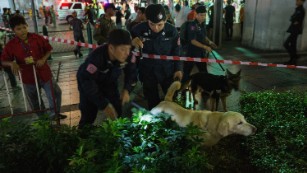
Investigators hunt for motive in Bangkok bombing
"From this incident, it is apparent that there are active individuals or groups that harbor the intention to damage Thailand, who may be pursuing political gain or other intentions by damaging the economy and tourism," the Prime Minister said Tuesday.
Analysts have speculated about a wide range of groups -- including opponents of military rule in the country or a rogue faction in the army or police -- but there is so far no evidence to link the attack with any of them.
Asked if there was any information on a possible motive, police spokesman Prawut said earlier this week it was too soon to reach any conclusions.
News Courtesy: www.cnn.com

